Starting a restaurant is a big decision and one that can go beyond the food you want to serve. The restaurant type you choose determines everything from the kind of food you’ll serve to how you’ll serve it—even where you are located.
Key Takeaways
- There are two major types of restaurants: quick service and full service.
- Beyond these two categories, restaurants are further categorized based on price point, cuisine, and atmosphere.
Before we get into some individual restaurant types, it’s helpful to get familiar with some general restaurant categories. Restaurant businesses generally fall into two major categories and are further divided from there.
What Are the Two Main Categories of Restaurants?
There are two major restaurant types; full service and quick service. You might also hear the terms table service and counter service, or limited service and full service. The categories are determined by where orders are placed and when customers pay.
If customers order at a counter and pay before their food arrives, that is a quick service restaurant. If customers pay after their food is prepared, that’s full service. All of the other different types of restaurants fall under these two major categories.
How Do You Classify a Restaurant?
Beyond full service and quick service, restaurants are further classified by cuisine, price point, and atmosphere. For example, fine dining is expensive with sophisticated decor, and has attentive service. Fast food is cheap, quick, and casual.
Below are 15 different types of restaurants, their advantages and challenges, prices, and types of food they serve. We also consider popular trends in each restaurant type to help you make the right choice for your restaurant.
15 Restaurant Types to Consider
This list of restaurant types can help inspire you to start the restaurant of your dreams, or redevelop an existing restaurant.
1. Fast Food/Quick Service Restaurant (QSR)
Fast food restaurants are quick service restaurant concepts like McDonald’s, Taco Bell, and Fazoli’s. Fast food restaurants are popular franchise businesses; so you can get started by buying a franchise (or convert a profitable single location into a restaurant franchise).

The food in a fast food concept is designed to be quickly made or warmed then served over counters or at a drive-thru. Fast food concepts tend to be busy—“high volume” in the industry—as 65% of Americans eat fast food at least once a week. You also need that sales volume to turn a profit, since fast food menus tend to be priced to move.
- Price point: Low price; dollar menus are common
- Menu: Quick to prepare dishes, streamlined selection to support speedy customer service
- Decor: Usually bright, easy to clean, and designed for fast turn-around
- QSR trends: Vegan options, bowl meals, noodles, mobile ordering, and artificial intelligence (AI) voice ordering are all making appearances in fast food concepts in 2024
2. Casual Dining
Probably the most common type of restaurant, casual dining restaurants are full service restaurants that offer a slower pace than fast food along with a congenial atmosphere. Like fast food, casual dining restaurants can make strong franchises, although you’ll find a lot of independent neighborhood restaurants in this category too.
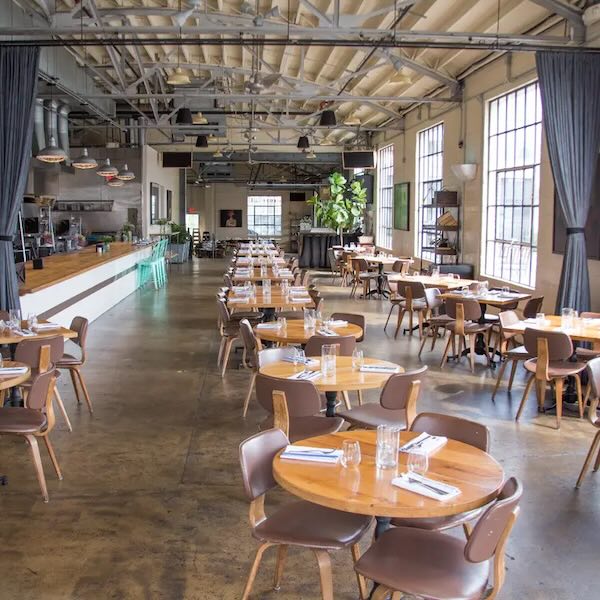
Casual dining menus run the gamut of cuisines, though the price points all tend to be affordable—but can vary depending on the menu. A casual restaurant can be anything from a burger joint to a French bistro or the latest Filipino taco mashup. So the menu prices have the widest range of any other restaurant type on this list. The price point depends on the ingredients, the chef, and what customers are willing to pay.
- Price point: Anything from one to three “$” signs on popular reservation sites’ listings
- Menu: More varied and larger than a fast food restaurant.
- Decor: Often themed (like a sports-focused cafe), focused on ambiance (like a down-home, comfort food concept). You won’t find tablecloths in a casual spot.
- Casual dining trends: Farm-to-table, seasonal variability, comfort foods, and family style menus are popular
3. Fast Casual
Fast casual—or quick casual—restaurants combine the best of fast food and casual dining: an affordable price point with good food and atmosphere. Typically, fast casual restaurants feature an upgraded fast service style menu with more nutritious and health-conscious options.
Most fast casual restaurants follow a quick service model where customers order and pay at a counter before their food is prepared. There are a lot of franchises in the fast casual world as well, such as Panera, Boston Market, and Moe’s Southwest Grill.

Menu prices are higher than in fast food restaurants, but still tend to focus on affordability. Fast casual restaurants also offer more extensive beverages than the standard soft drinks (signature lemonades are common) and some may even have liquor licenses to serve beer and wine.
- Price point: Tends to be more expensive than fast food restaurants, featuring higher-end, more thoughtfully sourced ingredients (though fast casuals are generally less expensive than a traditional sit-down restaurant)
- Menu: Healthier options of quickly made foods, like sandwiches, burgers, tacos, and noodles
- Decor: Usually more upscale than fast food, but generally not as thematic as casual dining
- Fast casual trends: Protein alternatives (like Beyond Meat and Impossible burgers), fermented foods like kimchi or yogurt, coupons and incentives, and bowl foods
4. Fine Dining
Fine dining restaurants are full-service restaurants marked by luxurious decor, discreet, attentive waitstaff, and high-quality multicourse meals. Multicourses are critical to a fine dining concept’s profitability, as fine dining ventures require a lot more staff to execute than fast service concepts.
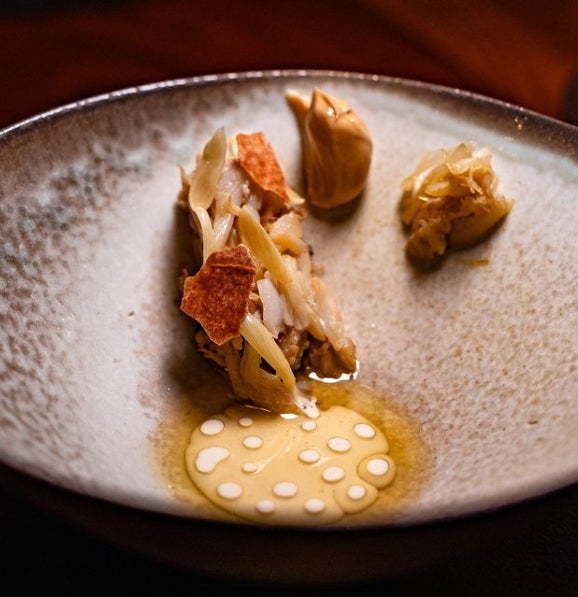
Fine dining appeals to a wide customer-base including travelers and special occasion diners. They typically have fewer regular customers than casual restaurants. These patrons also tend to have high expectations, wanting to see the best wines and cocktails alongside mind-expanding food and attentive service. Most fine dining restaurants are only open for dinner, though some also serve lunch and weekend brunch.
- Price point: Charges top dollar; $250 per person (or more) is not uncommon
- Menu: Any food type as long as it’s impeccably prepared with high-quality ingredients and paired with inventive wines and cocktails
- Decor: Sophisticated, comfortable, usually subdued for an air of privacy; fresh flowers; custom art
- Fine dining trends: Photogenic plating presentations, locally and responsibly-sourced foods, seasonal specialty dishes, craft cocktails and equally creative nonalcoholic beverages
5. Family-style
Family-style refers to the way food is served. Family-style restaurants can be full or quick service. Rather than each diner ordering their own dish, large orders are made for the table, and everyone serves themselves from common dishes.
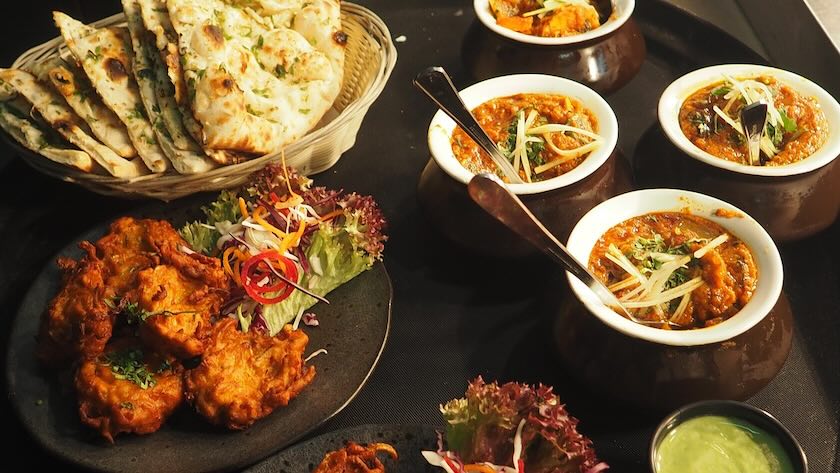
Family-style works for any kind of cuisine. It can be as simple as a pizza or a bucket of chicken served over a counter or elaborate Asian, Indian, or Middle-Eastern foods, served at a table in a dining room. Family-style is a great way to make any meal festive, but it can be tricky to get your quantities right, so a strong inventory management plan is crucial.
- Price point: Typically affordable to mid-priced
- Menu: Family-sized servings
- Decor: Large tables, lots of serving bowls; round tables with lazy susans for placing the food
- Family-style trends: Family meal kits for takeout and cook at home
6. Pub, Bar, and Brewery
If you’re looking to upscale a bar, consider adding a small restaurant with simple complementary foods. While the main focus is alcohol (or other drinks like kava), the food invites people to stay awhile and brings in a different quality of customer.

- Pricing: $$
- Menu: Complement the alcohol: breweries tend toward burgers; wine bars toward fresher foods like salads; kava. soups, chocolates, and bowl dishes
- Decor: Follow your bar theme
- Trends & Concepts: Kava bars, artisan drinks, smaller drinks with greater taste, seasonal drinks, microbrews
Related:
How to Start a Bar in 10 Steps: Small Business Guide
7. Cafe/Coffee Shop
Cafes, like pubs, concentrate on drinks. Coffee shops tend to not offer full meals, but snacks, baked goods, and a small selection of sandwiches or soups are sold at the counter. A coffee-based restaurant that serves a fuller menu is a cafe. When it comes to coffee shops and cafes, independent restaurants are as popular as chains like Starbucks.

A coffee shop doesn’t need to prepare all the food in-house. It is common for shops to buy baked goods and snacks from other local small businesses.
- Pricing: Tends to be affordably priced
- Menu: Great coffee a must–Also, baked goods, sandwiches, soups, granola bars, or other snacks
- Decor: Clean, casual, welcoming, with small tables, comfortable chairs for sitting and conversing, with an end table or coffee table for drinks–plus good Wi-Fi
- Cafe/Coffee shop trends: Sustainable or socially responsible coffee sources, specialty coffee drinks, alternative milks (oat milk, for example), functional coffee (adds superfoods, collagen, etc., to promote wellness), and cold brew
Related:
How to Start a Coffee Shop in 11 Steps
8. Buffet
Buffets are great for value-driven customers and picky eaters, but they can prove challenging to restaurant owners. Buffets rely heavily on foot traffic and keeping overhead down in order to turn a profit. They sell meals at a fixed price, and there can be a lot of food waste if things are not carefully managed. However, in 2022, they started making a comeback, rising 9% after a steady drop in previous years.

- Pricing: $—$$
- Menu: 36% of buffets are American cuisine, although Chinese is also popular
- Decor: Casual with emphasis on traffic and seating; often follows the theme of the cuisine
- Trends: Foods served in smaller vessels and live-cooking stations like an omelet bar to reduce waste
9. Diner
Diners are a little bit of Americana, offering basic foods like breakfasts and burgers—and don’t forget the milkshakes! Diners are flexible; some are only open for breakfast and lunch while others operate 24/7. Diners are great considerations where there’s heavy traffic due to tourism, or high concentrations of businesses or schools.
A counter with seating is a common diner focal point. A diner counter supports fast, seated service and is especially popular with single diners.

- Pricing: Tends to be low-cost
- Menu: 24-hour breakfast choices, burgers & fries, sandwiches, and salads
- Decor: Retro vibe (1950s-1970s): checkered tablecloths, chrome-and-Formica tables, jukebox, and a counter where people can sit
- Diner trends: Nostalgia, classic comfort foods, pies, healthy choices or upgrades on standard fare, without getting too far from the basics
10. Food Truck
According to IBISWorld, there are over 47,000 food trucks in the US, an increase of 15.8% over 2022. Food trucks are a great option for cooks that delight in creating food rather than serving it, although the small space can limit the number of dishes. They have lower overhead than brick and mortar restaurants, but you will need to find places where you can park and sell.

- Pricing: Can be affordable, but increasingly adventurous truck menus can be as pricey as a meal at a full-service restaurant
- Menu: Popular food truck foods are tacos, sandwiches, fries, burgers, hot/corn dogs, and mac & cheese
- Decor: Vivid, eye-catching truck wraps, custom graphics, witty, punny truck names
- Food truck trends: Cuisine mash-ups, gourmet grilled cheese, any comfort food with an upgrade, like lobster mac & cheese
Related:
How to Start a Food Truck Business in 9 Steps
Food Truck vs Restaurant: Which Is a Better Business?
11. Pop-up
Like food trucks, pop-up restaurants are mobile, temporary, and have lower overhead than a full service restaurant. Pop-up restaurants can operate out of restaurant spaces, outdoors, or any location where you can hold food at safe temperatures for extended periods of time. The key with a pop-up is temporary use.
Some restaurateurs use a pop-up as an inexpensive way to test a concept before committing to real estate. Promotion, especially on social media, is crucial to a successful pop-up, so people know where to find you.
There are no rules for menu style, service type, or price point. If you price your menu too high or create food that is too obscure, you’ll know it right away. Pop-ups tend to attract a large percentage of foodies; they’ll let you know if they like what you’re serving.

- Price point: Varies; can feature any type of food from fast food to fine dining and the price points will match the menu
- Menu: You can rotate the menu, changing as you change destination
- Decor: Tent or pavilion that promotes your brand, fold-up tables and chairs that are easily stored and transported … all decorated to suit your clientele—a noodle shop may have an Oriental theme, while something aiming higher-end might have fabric tablecloths and candles
- Pop-up trends: Dessert-only pop-ups, nonalcoholic beverages, brand partnerships, cuisine mashups, and social media-friendly foods
12. Ghost Kitchen
Not interested in running a dining room? Ghost kitchens are delivery only. They may share a kitchen with another restaurant, or operate on their own with a drive-thru window or pickup parking spots. Many ghost kitchens also operated out of shared commercial kitchen spaces.

With a ghost kitchen, you can serve one menu or several. The only limitation is your cooking bandwidth.
- Pricing: $$
- Menu: You decide based on your skills and preferences and the needs of the market area
- Decor: No interior, but ample parking, preferably with designated slots and possibly a pickup booth or window or a drive-thru
- Ghost kitchen trends: Partnerships with multiple third-party delivery platforms, delivery robots (especially in high-density locations like college campuses or city centers)
Related:
How to Start a Ghost Kitchen in 13 Steps
13. Breakfast Restaurant
Breakfast is the most profitable meal for restaurants. Breakfast menu ingredients are inexpensive and the same ingredients work in multiple dishes. Breakfast restaurants and diners are seeing big growth with projected growth of 6.8% rise between 2021 and 2028. Breakfast restaurants can close at midday, which reduces labor costs. As your popularity grows, you might decide to expand into lunch or dinner.
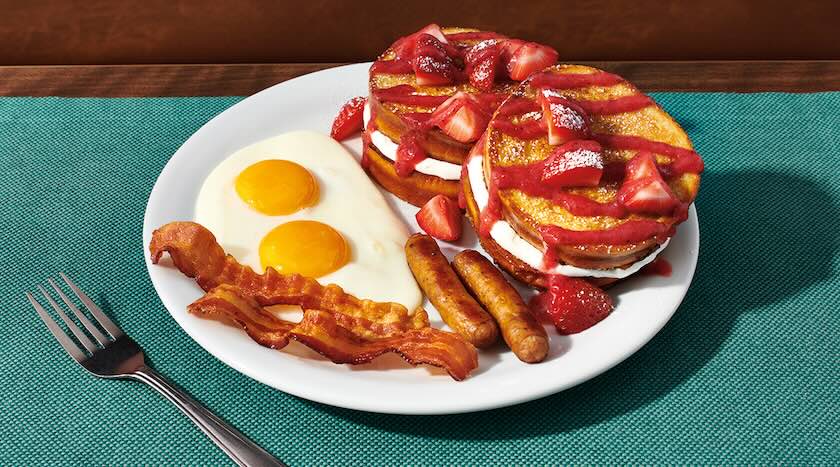
- Pricing: Everyone knows that breakfast ingredients are inexpensive, so your menu needs to be affordable
- Menu: Breakfast items: eggs, bacon, pancakes, waffles … Good coffee from the pot!
- Decor: Casual, welcoming
- Breakfast restaurant trends: Upgraded ingredients, eggs benedicts, adding superfoods, breakfast bowls
14. Robot Restaurant
Robot restaurants are usually casual or fast-casual restaurants with a high-tech upgrade. They use robots as hosts or food runners, conveyor belts to deliver food, and QR codes or tabletop terminals to process payments. They require a big initial investment (service robots retail for around $20,000 each), but that initial investment can be recouped through lower overall labor costs.

- Pricing: $$
- Menu: Anything from hotpot to pizza, as long as it’s easy to serve from robotic food runners or conveyor belts
- Decor: Relatively new; room for the robots to maneuver and charge
- Robot Restaurant Trends: Kitchen automation, AI, automated delivery
15. Bakery
If the smell of freshly baked breads and sweets fills you with joy, then a bakery might be for you. Bakery restaurants are quick service businesses focused on sweets, pies, pastries, breads and sometimes additional simple meals like soups, salads, or sandwiches.
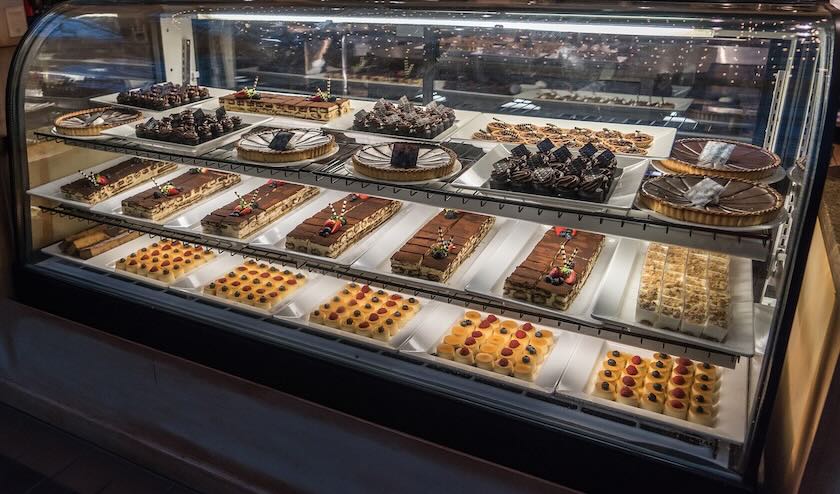
Baked goods—especially those that require yeast to rise—run on their own clock. Most bakeries have an early morning or late night staff working to prepare the doughs and bake off the fresh pastries before customers arrive. In addition to selling pastries to in-person customers, bakeries can expand their revenue streams by selling baked goods in bulk to coffee shops and other restaurants.
- Pricing: Tends to offer goods at a low price; there is only so much customers are willing to pay for a Danish
- Menu: Simple meals with a large selection of excellent savory and sweet baked goods
- Decor: Open, inviting, and homey, with a large display counter with baked items and breads in the back. Smaller tables.
- Bakery restaurant trends: French bakery and sweets; everything muffins; cookies & coffee; gluten-free; baked goodies gift services
Choosing the Best Restaurant Type for You
Restaurants can be a huge investment, and different studies show anywhere from 30% to 40% of businesses fail in the first year. Thus, it’s vital that you choose a restaurant type that works with you now and that you can sustain through the difficult first years. Therefore consider the following:
- How much can you invest? Fine dining and robot restaurants take huge initial investments, while food trucks and pop-ups are comparatively inexpensive to start.
- What kind of food do you want to cook/serve? If you’re into basic fare, a diner or casual dining might be the best fit. Food trucks allow for menu creativity, while bakeries can display your pastry prowess.
- Indie or franchise? Franchise restaurants provide novice restaurant owners with time-tested menus, training materials, and brand recognition. But they can be pricey to start. If you want creative control, an independent restaurant will feel more comfortable.
- Buy an existing one or start your own? An existing restaurant comes with customers, equipment, and staff—though you’ll also inherit any problems along with those assets. Though buying an existing restaurant can have you up and running a business much faster than if you start from scratch.
- Do you want a dining area? Dining areas mean more furniture and more service staff, and higher expectations on decor. If you’re just interested in creating great food and less interested in service, a quick service concept will be more your speed.
- What does your area need? Doing some research into the market and competition can help you narrow down the different types of restaurants to those most likely to succeed.
Learn more about starting a restaurant with these articles:
Restaurant Type FAQs
Bottom Line
Per the National Restaurant Association, 90% of adults enjoy going to restaurants, and the industry itself is expected to reach $1 trillion in sales. However, 45% of restaurateurs expect competition to be more intense than in 2023. Selecting the best type of restaurant for you gives you the first step toward success.



